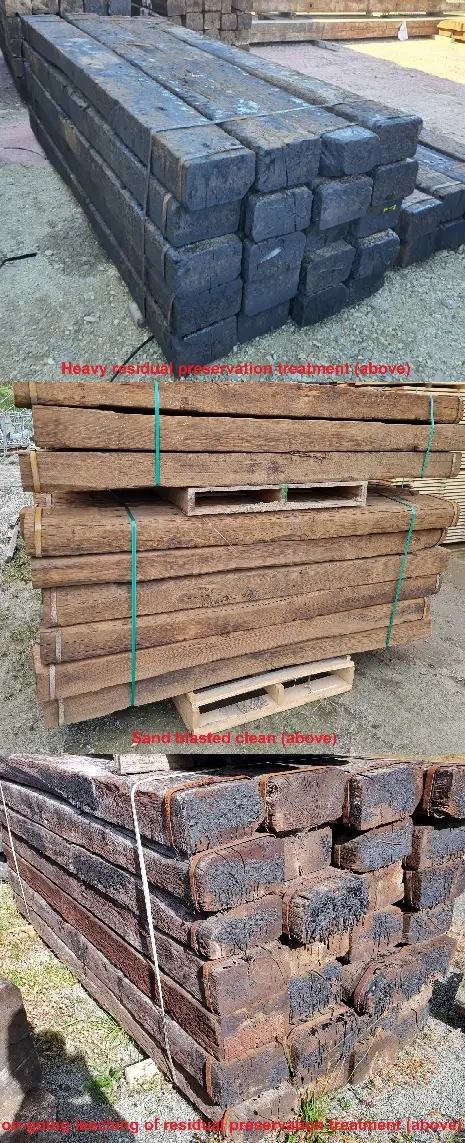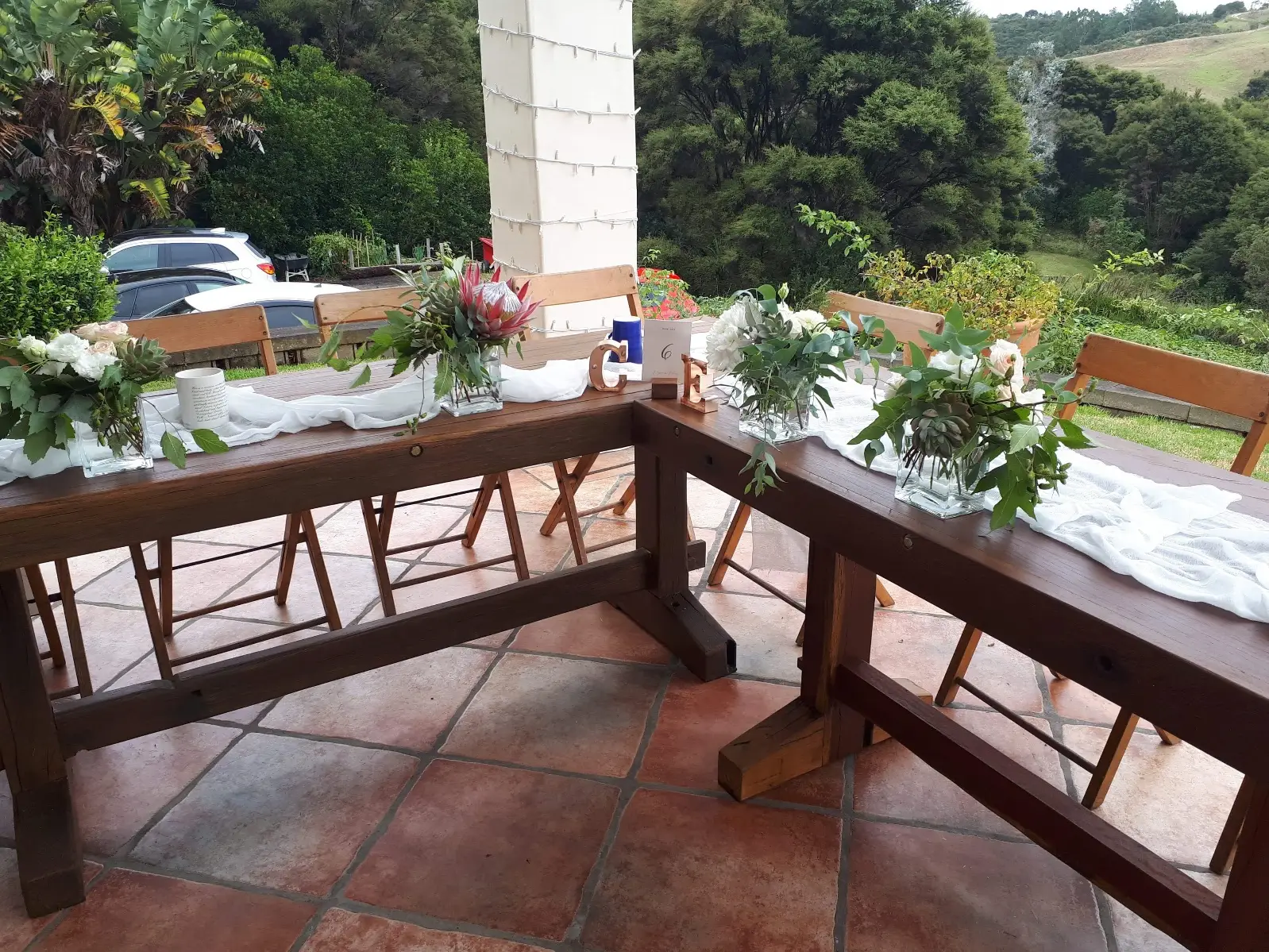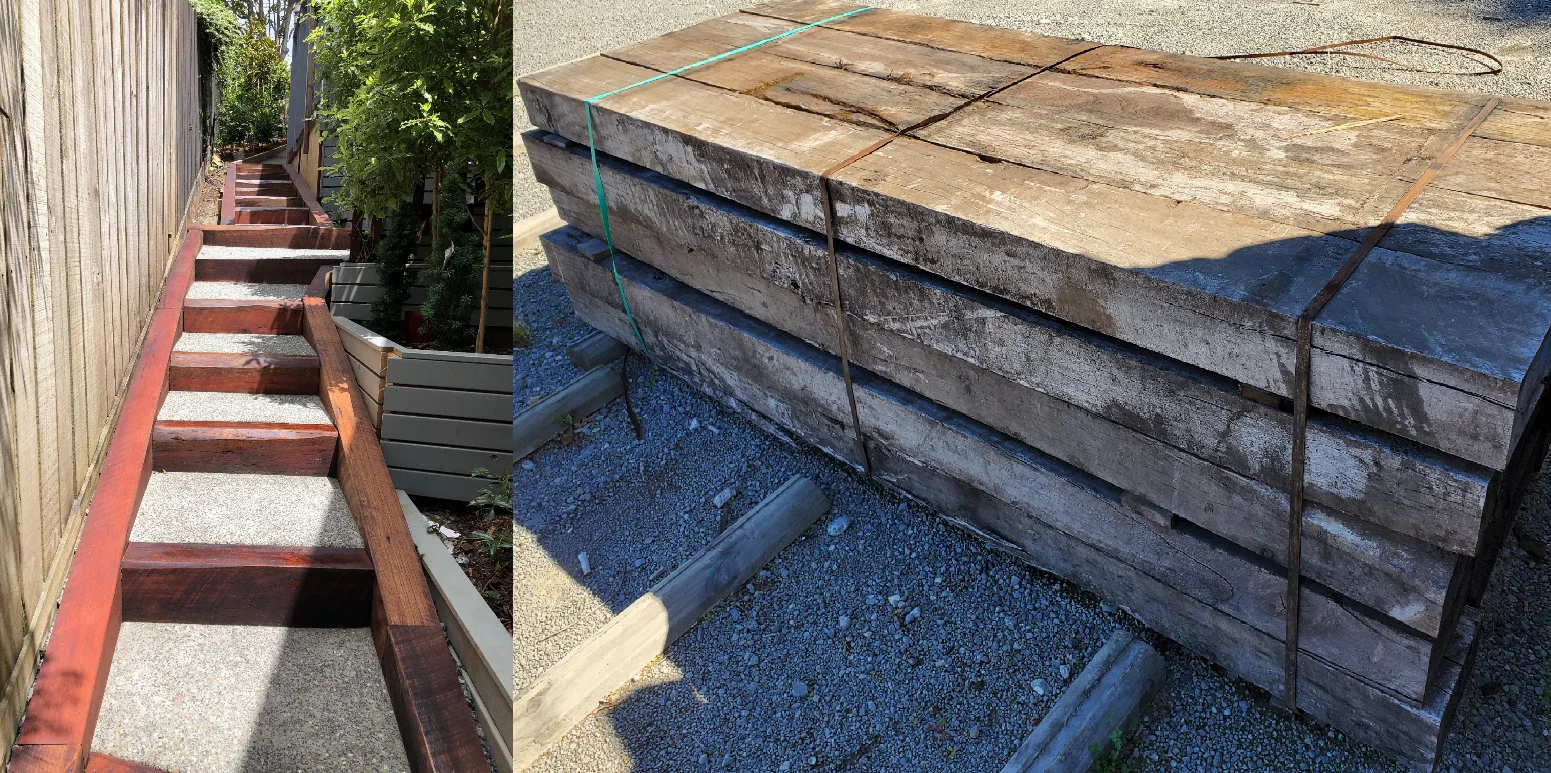Not all sleepers are treated, and whether a sleeper is treated, and with what type of treatment is typically decided around the environmental factors of the railway line, the species of timber that are available for use, cost effectiveness and expected life span of the sleeper.
Hardwood timber treatments are essential for enhancing the durability and longevity of timber products, but given the timbers natural resistance to moisture and insects, treatments are not always necessary.
Below we will walk through both manufacturer applied treatments, typically for timbers in an industrial context, as well as after-market treatments users may choose to apply to timbers to protect and enhance the wood.

Preservative Treatments
These treatments involve applying chemicals to the timber during the manufacturing stage to protect it from rot, insects, and fungal decay. Common preservatives include creosote, copper-based compounds, and borates. These treatments can be applied through pressure treatment or dipping. Treatments like this, by design, will forever leech outwards of the timber during their life and can weather off from exposure to the elements, so it is not always visually apparent, but should always be inspected for before using in areas other than in the garden.
It is imperative to know if a sleeper has been (preservation) treated when considering specific applications like interior use, seating or proximity to living spaces, as well as for edible gardens. These treatments do contribute to the ongoing durability of the sleeper, so often a sleeper with heavy residual treatment is very well suited for long term use deep in the garden or in damp environments. -A much better use than seeing the sleeper go to a commercial landfill which is often the case internationally.
Preservation treatments can be hazardous for the environment and those handling the timbers, especially when cutting or adapting so thorough use of personal protection equipment (PPE) like that listed in the Interlink handling/grading guide is highly recommended, as well as keeping clear of fresh water ways or ecologically sensitive areas.
Customers will often be asked what the intended use of a sleeper will be for ahead of any product suggestions and quotation by Interlink to ensure suitability and ongoing longevity of the timber in the given application and setting.
Waterproof Membrane Barriers
Waterproof membrane barriers are coatings that can be painted or sprayed onto the timber to create a protective layer and is generally done by consumers and installers of timbers, not the original manufacturers. These barriers help prevent water penetration, which can cause swelling, warping, and decay. Products like bitumen-based coatings, liquid rubber, and acrylic membranes are popular choices for waterproofing timber and are often recommended to use when installing sleepers for long term use. These membrane barriers are easily accessible through hardware and paint stores and are relatively cost effective considering the return in durability they provide. It can be a small input at the time of installation but can offer significant longevity further down the track. Typically suggested when a used sleeper is being laid against earth or in/around concrete for instance, though is also advisable for new builds using unused railway sleepers or reclaimed timber that has been milled if installed against soil or in damp environments.
There are some well known Kiwi brands that produce reliable membrane barriers so there will be plenty of options for any given application and setting in mind. Interlink now sees Trade clientele using membrane barriers more frequently, even with the New Australian hardwood sleepers which carry fantastic natural durability factors on their own. Protect your asset, gain more value and enjoy a longer lifespan for timbers with waterproof membrane barriers.
Oil-Based Treatments
Oil-based treatments, such as linseed oil, tung oil, and Danish oil, penetrate the timber and provide a protective layer. These treatments enhance the natural beauty of the wood while offering protection against moisture and UV damage. Regular reapplication is necessary to maintain the effectiveness of oil-based treatments, but ongoing coats will compound over time, forever increasing the effectiveness. These oil-based treatments are best suited for boutique and interior applications, particularly where the timbers have been cut, planed or modified. Typically, oils will be applied just before, or just after installation, allowing adequate time for drying and curing. Oils can tint the timber colouration, particularly when freshly applied, but this will change over time as the timber absorbs the oil and dries out. It is often best to have test areas before fully committing to coating to see how the oil and timber react, to ensure the end visual finish is as desired. Oils will react differently to various timber species, including factors like the timbers state of weathering, dryness and general exposure to the elements, so it can be slow and methodical process when employing oil-based treatments. Oil treatments will also offer good colour continuity, and even 10-20 years down the track a re-application can freshen a setting and reinvigorate the timbers, offering the ‘like-new’ look and feel at any time.

Reclaimed and rustic hardwood with natural oil-based application.
Stains and Sealers
Stains and sealers are used to enhance the appearance of timber while providing protection against the elements. Stains penetrate the wood and add colour, while sealers form a protective barrier on the surface. Many products combine staining and sealing properties for convenience and to reserve the visual finish once achieved. Sealers are re-applied periodically over the years, and contribute to protecting the timber surfaces from scrapes, knocks and general wear and tear.
A typical process when undertaking staining and sealing is to first work the timbers to the ideal form and texture. A touch of sanding, wire brushing, scouring or perhaps just a water blast can freshen and clean the timbers, then it is just a matter of homing in on the preferred colouration, a mix between the timber itself, and the stain(s) applied. It can be a bit of a juggling act to achieve the desired colouring immediately, and often one may need to consider how the timbers will fade in time, even with stain and sealer applied. Having a fresher, richer colour sealed in initially may be required to then see the ideal fade later in time, remembering the timber will slowly absorb and dull the stain in the short to mid term.
Of course, it is very challenging to reapply staining if the sealer has already been applied, so can be the case of installing stained timbers for some time with periodic (re)applications until the timber has drank in all it needs to, and the stain colouring holds firm. This timeline can vary from a week or two, all the way out to a few years depending on the general exposure of timbers and volume involved.
Polyurethane and lacquer are some of the most commonly used sealers, and are generally compatible with most stains, timbers and settings. They are widely available at hardware stores and paint shops, but it is imperative however that the colouring, fade and adequate absorption of the staining has been achieved before considering the sealer. Often the sealing can occur days, if not weeks or months after a hardwood has weathered, faded and stained to suit the visual finish. The sealing can also take considerable time to harden, dry and cure, and more coats will offer more protection, but take longer between each application.
Once cured and hardened, a sealer like polyurethane will offer fantastic practical protection, as well as preservation of the aesthetic finish so it is a very rewarding and enjoyable process to undertake.
 Australian hardwood sleepers with stain applied
Australian hardwood sleepers with stain applied
So, when considering the use of reclaimed hardwoods in any setting or application, consider both the long-term visual finish as well as the long-term integrity one would ideally want. Installing hardwoods can be a challenge even at the best of times, and a bit of extra sanding and coating is not always high on the to-do list on site, but do remember it is the treatments, oils, stains and sealers that will future proof the timbers and make your setting a testament to time and character, so be sure to go that little bit extra to reap the rewards down the line. Talk to the team at Interlink about the visual finish you have envisaged and how we can best go about getting to done.

